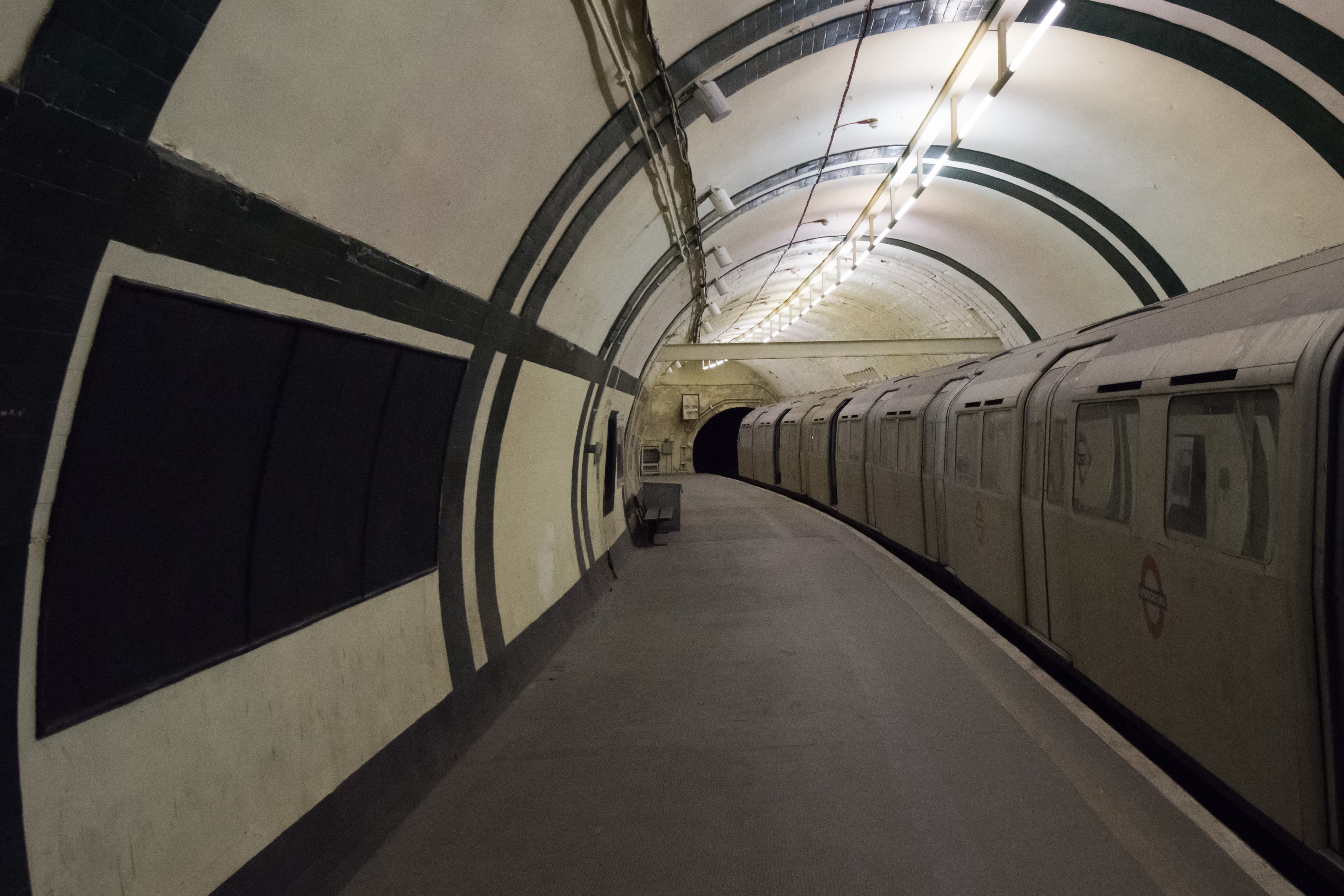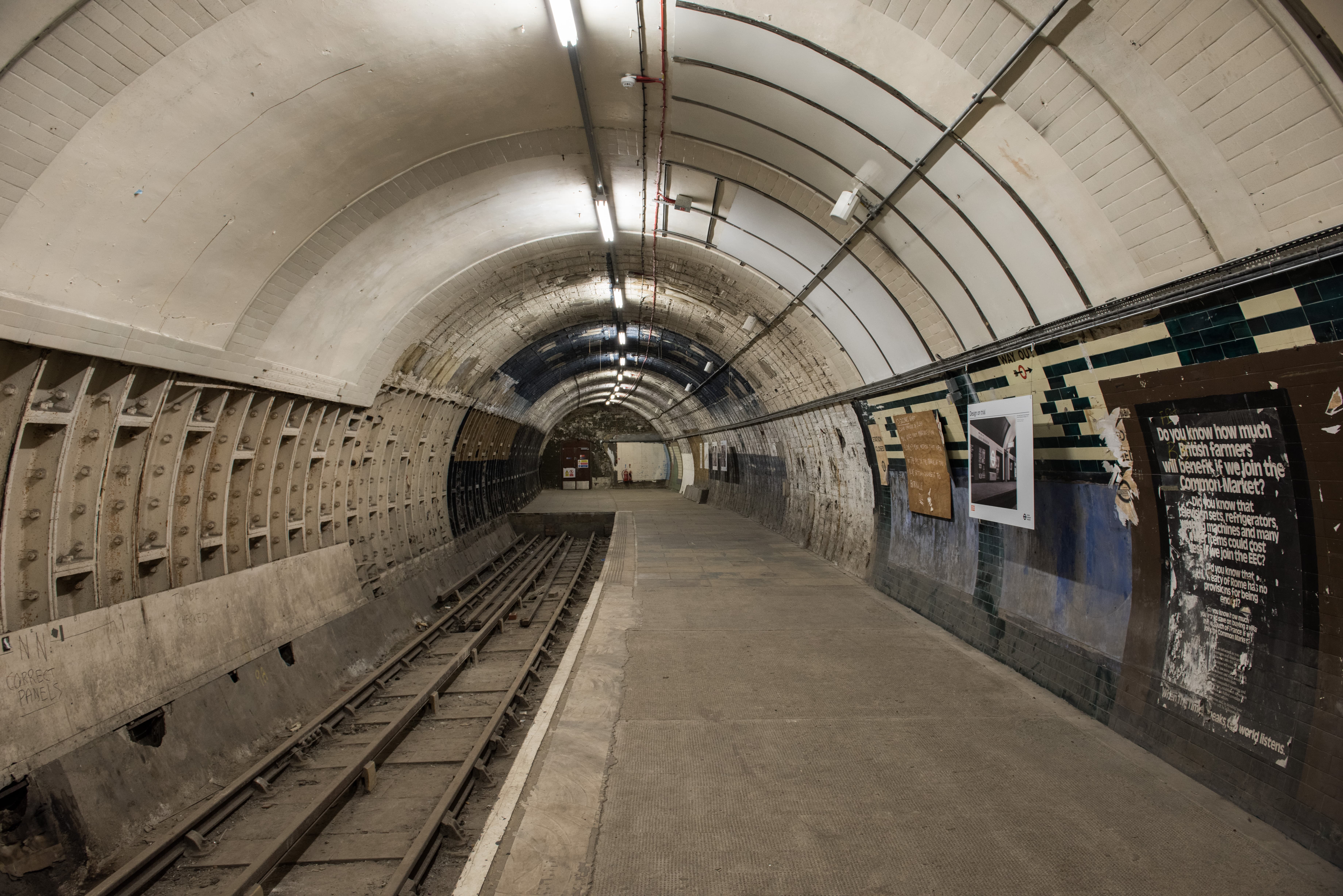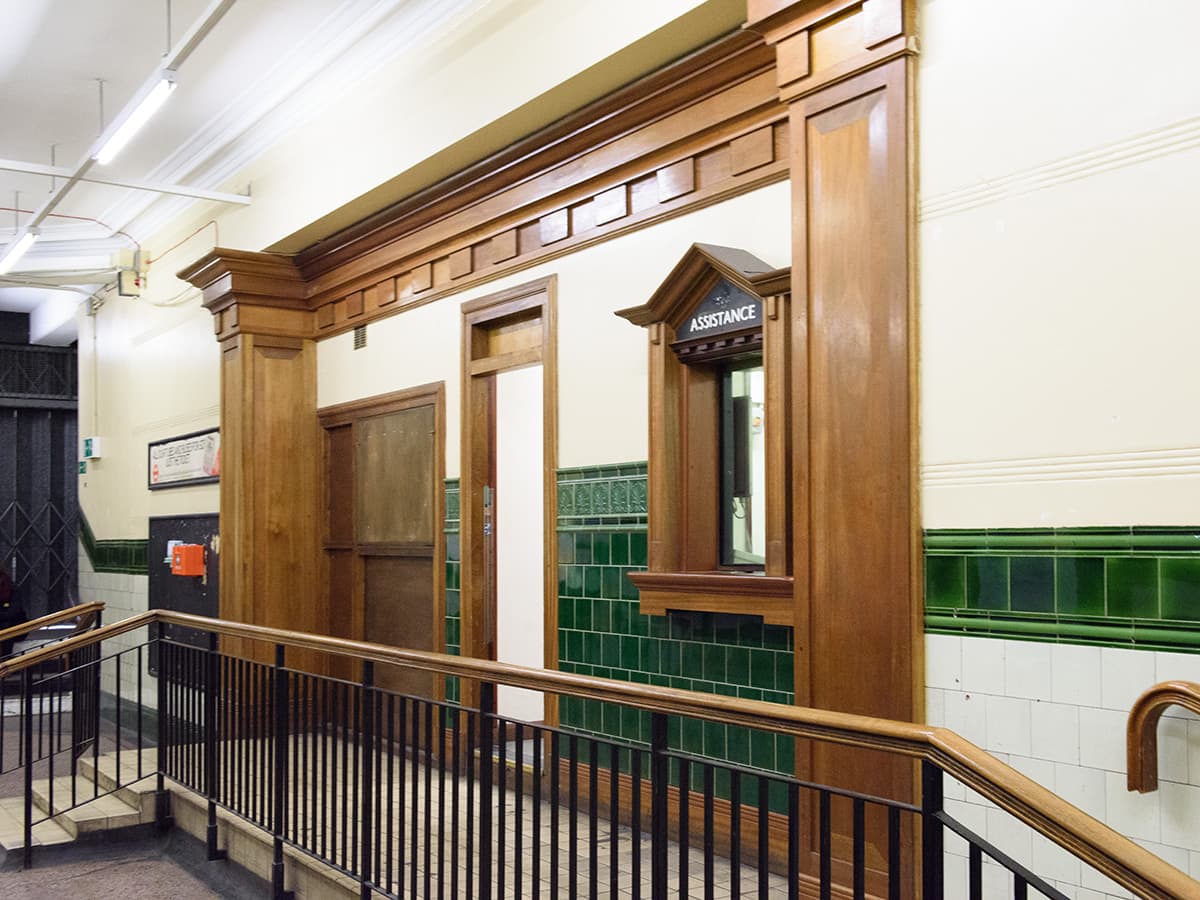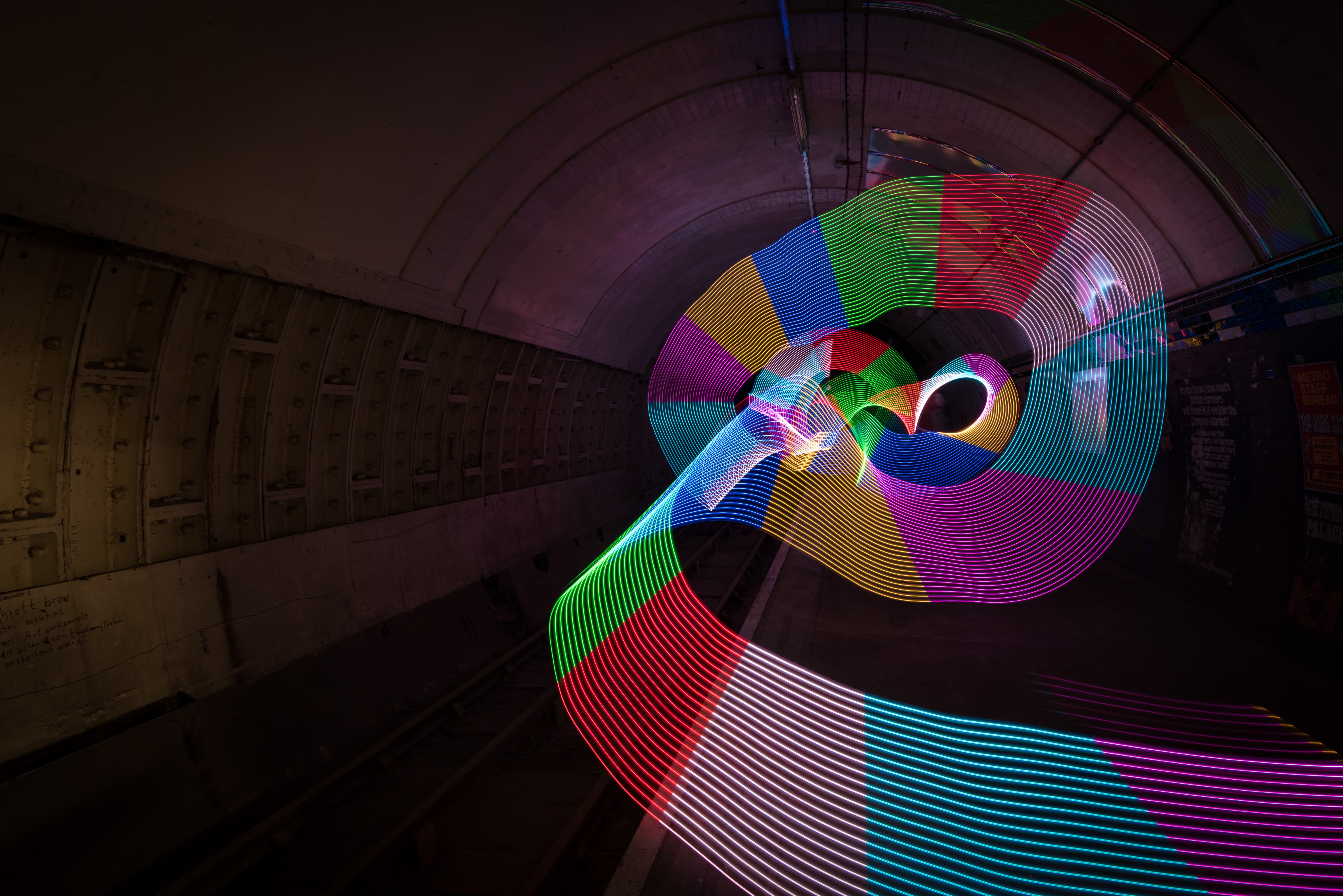AP at Nikon Discover Different, London February 2016
Over the past few months, Nikon has run a series of free photography events under the ‘Discover Different’ banner. Following events in Oxford, Cambridge and Brighton, I was invited to join one held at London’s disused Aldwych tube station on 10th February 2016. It was billed as, ‘an exclusive photographic opportunity in a unique location’, and certainly lived up to that promise.
I arrived at Aldwych armed with a Nikon D810 plus AF-S Nikkor 24-70mm f/2.8G ED and AF-S Nikkor 16-35mm f/4G ED VR. After a coffee and quick briefing about safety precautions, the 20 or so attendees split into three groups and headed for our first assignment.
Film noir fashion
In my group’s case we started with a film noir-themed fashion shoot held at one of the station platforms, complete with vintage train. The idea was to learn a bit about using off-camera flash under the guidance of Neil Freeman, Training Manager at Nikon School.

After a little time sorting out the setup and explaining the idea behind the shoot, it was time to set up the D810’s built-in flash to work as a wireless controller and start putting what we’d been taught into practice.
The first set-piece shot used one light in front of the model and to her left, with a second placed behind her to illuminate the side of the train. Using the camera’s flash control menu we were able to experiment with changing the power ratios of the two lights, to manipulate the look of the images.
What you should immediately be able see here is that by using a couple of flash units, and setting them up to overpower the weak ambient light, it’s possible to transform the dull and featureless lighting of the tunnel into something completely different. I shot several versions of this pose, and unexpectedly the one I liked best was technically a mistake, with the backlight flash visible towards the edge of the frame. I experimented with various processing approaches and settled on using deep black shadows to suit the mood, with a subtle sepia tone to give something of a vintage look.
For our second pose we moved inside the carriage and went for a strongly backlit look, with relatively low-powered fill-in from the front. I deliberately tilted the camera at an angle to bring a slightly unsettling element to the shot, and framed moderately wide using the 24-70mm at around the 30mm mark.
In post-processing I again aimed for deep blacks across much of the frame, and then used the dodge tool in Photoshop to subtly spotlight the model’s face. Again the image is lightly sepia toned. But they key point here – again – is that the look of the shot is determined entirely by using a couple of off-camera strobe units set to different power ratios: in contrast the carriage’s ambient lighting was relatively flat and featureless.
Light painting
Our second photo session was half an hour experimenting with light painting, instructed by Artur Teixeira of Nikon Professional Services Support and Emily Mudie, Nikon UK’s Training Coordinator. This was held on another empty platform, with the confined space ideal for lighting up in technicolor.

While it’s possible to spend hundreds of pounds on light-painting LED sticks, Nikon had rigged up much the same kind of device using commercially-available strips of LEDs, a battery pack and a broom handle, apparently all for less than £10 for each completed unit.
With the D810 on the brand-new, and very impressive Manfrotto 190 go! carbon fibre tripod tripod, I mounted the 16-35mm lens, plugged in a cable release and set the shutter to bulb.
With this kind of light-painting, there’s always an element of chance about how well it will work. But with Artur and Emily in charge of the LED light sticks we experimented with a series of different shots.
In the example above I processed the raw files to emphasise the detail on the tunnel wall, but in the shot below I deliberately pushed the shadows a bit darker to emphasis the backlit, outlined figure on the right of the frame.
Fashion Shoot
The third and final session of the day was a portraiture/fashion shoot in the station’s ground-level ticket office, with Nikon’s Training Specialist Mark Higgins. For this I switched back to the 24-70mm f/2.8 lens, and popped up the camera’s built-in flash again to control the off-camera flash units. This is a really useful feature, and goes a long way to justifying the inclusion of a built-in flash into a top-end camera such as the D810.

While the ticket office has plenty of interesting architectural details, the fluorescent strip-lighting is bland and boring. The solution, of course, is to use off-camera flash units to sculpt the light in a much more interesting way.
Our initial set-up placed the model against a textured backdrop, ideal for cropping in tight to turn it into an abstract background.
This shot is lit using two flash units – one to the left with a tall, strip-shaped softbox, and one to the right filling in. The final effect, though, is almost as much about the post-processing as it is about the lighting – I applied a heavy vignette and some subtle toning directed mainly to the highlights, using Adobe Camera Raw’s split-toning function.
We then moved on to shooting in the station’s huge old lift. With the same tall striplight providing the main light, Mark set a second flash to fire through the grid structure of the lift door, producing an interesting shadow effect on what would otherwise be a slightly plain green background. For this series of shots I experimented with different angles and post-processing methods, illustrating the variety of looks you can get even from a single basic setup.
I processed this version in black & white with just a hint of toning in the highlights. The aim was to use the various textural elements to add interest to the image, without overpowering the model herself.
This second shot uses a much bolder approach, with vivid colours, a much tighter square crop, and a more relaxed pose. It shows how it’s possible to get very different looking results from the same setup using post-processing, which you can also preview as you shoot using the camera’s own Picture Control modes. Meanwhile the third version below is quite similar to the first, but with a dramatic tilt for a more dynamic composition.
All in all, a grand day out

No, you can’t really buy a week’s travel in London for £12 any more; nowadays that will only pay for a single day. But it turns out that if you’re lucky enough to get a place in the entry draw, you can get a very useful half-day’s photographic training from Nikon absolutely free, including, in this case, access to an interesting location that’s usually out of bounds.
Nikon’s current round of Discover Different days has now finished, but I’d recommend Nikon users look out for the next ballot and apply to join on. I think amateur photographers of most skill levels could gain something for the day: it’s not often most people get to shoot with professional models, or get to experiment with off-camera flash systems. With any luck you’ll come away with some images that you wouldn’t get any other way, having learned something new about about photographic kit and technique in the process.
With thanks to our models for the day, Florence and Courtney.















